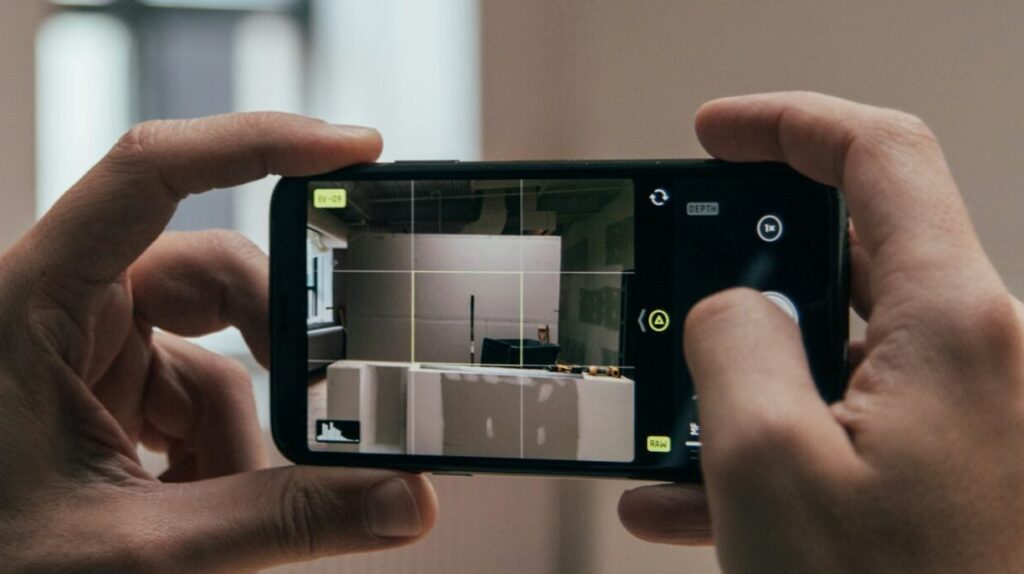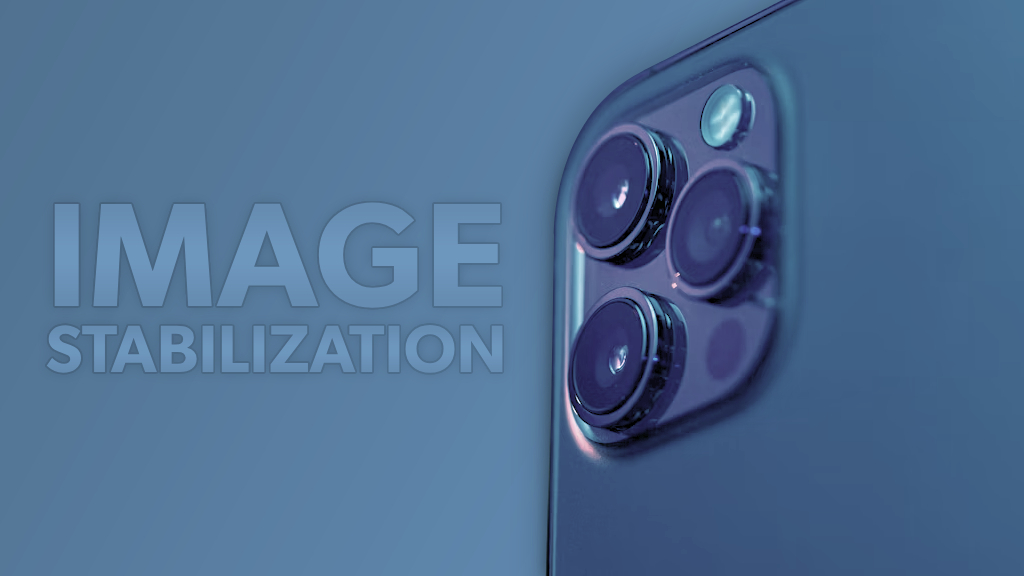Introduction
Gyro EIS stands for Gyro Electronic Image Stabilization, while OIS is Optical Image Stabilization. They both do the same job but in slightly different ways.
Key Takeaways
- Different Methods: Gyro EIS uses software to stabilize images, while OIS relies on hardware adjustments.
- Trade-offs: Gyro EIS is cheaper and faster but can reduce image quality and cause “jelly effect,” whereas OIS offers better quality without digital artifacts but is more expensive.
- Future Trends: Hybrid systems combining Gyro EIS and OIS could offer superior stabilization by leveraging the strengths of both technologies.
What is Gyro EIS?

Imagine you’re filming something cool with your phone. Now, if your hand shakes a bit or you accidentally bump into something while filming, Gyro EIS jumps into action.
When it spots these sneaky shakes, Gyro EIS gets to work, playing detective with each frame of your video. It compares them all, and if it detects any sudden shifts in the scene, it digitally nudges the image back to where it should be if your camera had stayed perfectly still.
But here’s the catch: While Gyro EIS works to stabilize your footage, it can sometimes mess with the quality a bit.
Similarly, your stabilized video might look a tad less sharp or clear compared to the original footage. But hey, it’s a small price to pay for getting rid of those pesky shakes, right?
What is OIS?

Now, let’s talk about Optical Image Stabilization (OIS), the muscle-bound cousin of Gyro EIS. While Gyro EIS relies on brainy software, OIS is all about flexing its hardware muscles to keep your shots steady.
Here’s how it works: Imagine you’re filming a beautiful scenery, but suddenly your hand twitches a bit because you got startled by a loud noise (it happens to the best of us!). That’s where OIS jumps into action, using a fancy micro-electromechanical system (MEMS) gyroscope to detect any movement.
OIS senses the shift and makes a lightning-fast adjustment. It nudges the camera in the opposite direction to counteract your hand’s movement. So, if your hand goes left, the camera goes right, keeping your shot on target and shake-free.
Ah, here’s where OIS shows off its hardware muscles even more! Unlike Gyro EIS, which does some digital cropping and tweaking to stabilize your footage, OIS keeps it real with a full-sensor readout. Let me break it down:
So, you’re out there, capturing the perfect sunset with your phone, and suddenly a strong gust of wind tries to mess up your shot. But fear not! OIS is on the scene, and it’s not messing around with any cropping or digital shenanigans.
Instead, OIS keeps things simple and straightforward. It harnesses the power of the full sensor readout, meaning it captures every pixel of your shot without any trimming or cropping.
And here’s the best part: Because OIS keeps it real with the full sensor readout, you don’t have to worry about any weird distortion or wobbling in your videos. You know, that funky “jelly effect” you sometimes see with digital stabilization?
Gyro EIS vs OIS: The Comparison

While both Gyro EIS and OIS aim to stabilize your images and videos, they do so in different ways and each has its own strengths and weaknesses.
Difference between GYRO EIS and OIS
Although both are similar technologies, both have different end goal. That is why you’ll find both in some smartphones.
The goal of Gyro EIS is to stabilize video and remove weird shakiness caused by external factors like shaking hands.
On the flip side, OIS targets individual frames. So if you’ve ever captured pictures or videos in low light, you probably noticed the blur that is caused by shakiness. OIS helps remove this blurriness.
But they still can be compared for what they do, REMOVE SHAKINESS!
Advantages of Gyro EIS
Let’s circle back to Gyro EIS for a sec. It uses your phone’s accelerometer to keep things steady when you’re shooting videos. But here’s the lowdown:
Instead of relying on fancy hardware like OIS, Gyro EIS does what it does purely through software. It taps into your phone’s accelerometer, which is like the built-in gyro that detects any hand movements while you’re filming.
Since Gyro EIS doesn’t involve any moving parts in the camera lens or sensor, it’s lightning-fast at capturing each frame.
Disadvantages of Gyro EIS
But here’s where things get a bit wonky: Gyro EIS can sometimes lead to a funky phenomenon known as the “jelly effect.” Picture this: You’re filming your friend’s bumpy bike ride, and suddenly the video looks like it’s made of wobbly Jell-O. Yeah, not the look you’re going for!
This jelly effect happens because Gyro EIS tries its best to stabilize your footage, but sometimes it overcompensates a bit, resulting in an unnatural look.
Advantages of OIS
Ah, now let’s zoom in on OIS and its hardware prowess. Unlike Gyro EIS, which relies on software smarts, OIS flexes its muscles with good old-fashioned hardware. Here’s the scoop:
With OIS, you won’t find any fancy software tricks up its sleeve. Nope, it’s all about the raw power of hardware, using your phone’s gyroscope and tiny motors to do the heavy lifting. Think of it like having a tiny construction crew inside your phone, ready to move the camera lens or sensor at a moment’s notice.
And the result? Well, it’s like capturing footage with a steady hand and a keen eye, without any fancy effects added in post-production. OIS keeps things natural and true to life, giving your videos that authentic look and feel.
Disadvantages of OIS
But here’s the catch: Building top-notch OIS hardware isn’t the best example of cheap. You’ve got those tiny motors, gyroscopes, and other gizmos working together like a well-oiled machine, and that adds to the overall cost of your smartphone.
Winner?
So, to wrap things up, it’s like this: OIS is the high roller of stabilization, offering top-notch quality and natural-looking footage. But, like any luxury item, it comes with a price tag and some complexity behind the scenes.
On the flip side, Gyro EIS is the more budget-friendly option, keeping things simple and easy to implement. Sure, it might not deliver the same level of quality as OIS, but it gets the job done without breaking the bank.
The Impact of Stabilization on Smartphone Photography
Stabilization tech, like Gyro EIS and OIS, is like having a secret weapon in your smartphone’s arsenal.
Whether it’s Gyro EIS or OIS, they work tirelessly to counteract those pesky hand tremors and keep your shot steady as a rock.
And it’s not just about keeping things still. Stabilization tech also helps to reduce blur caused by movement. With stabilization on your side, you can say goodbye to blurry photos and hello to crystal-clear images, even in challenging conditions.
The Future of Smartphone Stabilization
The future of stabilization tech is looking bright! It’s like we’re on the cusp of a whole new era of smartphone photography and videography, where every shot is a masterpiece waiting to happen.
As technology marches forward, we can expect to see even more improvements in both Gyro EIS and OIS. But that’s not all – some smartphone aficionados are already cooking up something truly special by combining the powers of both systems.
Picture this: You’ve got the lightning-fast responsiveness of Gyro EIS, paired with the top-notch image quality of OIS. It’s like combining the speed of a cheetah with the strength of a rhino.
These hybrid image stabilization systems aim to give you the best of both worlds, whether you’re shooting action-packed videos or capturing stunning stills.
Conclusion
So, whether you’re capturing your everyday adventures or masterpieces, remember to give a nod to Gyro EIS and OIS for their invaluable contributions to modern smartphone photography and videography.
Note: Any verdict given by us on any of the companies, or specs of a device is subjective. Our preferences can be different from yours, so be sure to conduct your own research to make a decision that is good for you.
Check out information about OnePlus 12 Hasselblad Camera.
Frequently Asked Questions (FAQs)
Phonesaaz aims to guide users toward making informed purchase decisions by offering clear, jargon-free insights. It covers product comparisons, reviews, and targeted guides to address specific aspects of smartphone use.






